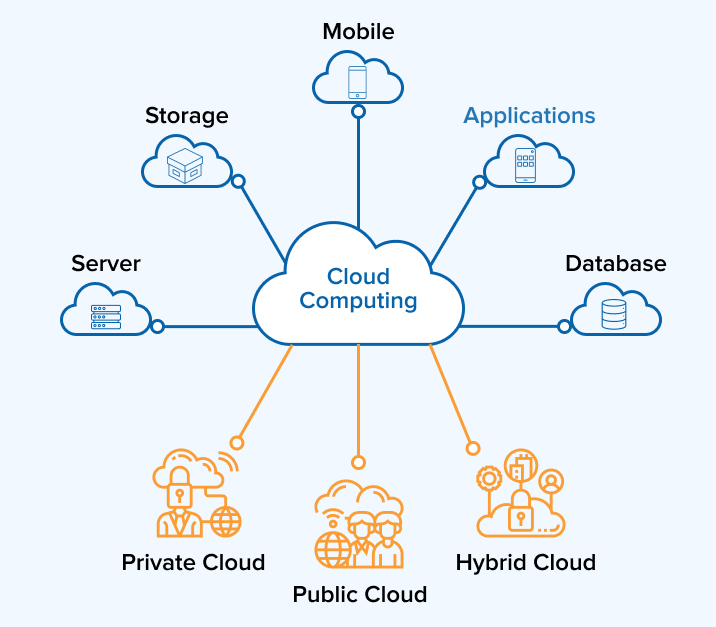Boost Your Company with Cloud Services: An Overview to Modern Solutions
Wiki Article
Achieve Seamless Scalability With Cloud Provider
In the ever-evolving landscape of cloud services, achieving smooth scalability stands as a foundation for modern organizations looking for to remain affordable and versatile. The quest for seamless scalability with cloud services unveils a world of opportunities for those eager to welcome the transformative power of dynamic resource monitoring.Benefits of Cloud Scalability
Cloud scalability offers companies the versatility to dynamically change sources based on demand, making sure ideal efficiency and cost efficiency. One vital benefit is the capability to range sources up or down promptly in reaction to rising and fall workloads. This agility makes it possible for businesses to meet altering client needs without over-provisioning resources, eventually resulting in cost financial savings. Scalability also enhances performance by making sure that systems can handle raised web traffic or workload without experiencing downtime or downturns. By effectively allocating resources, organizations can preserve high degrees of efficiency throughout peak times without unneeded costs throughout quieter durations. Additionally, cloud scalability promotes innovation and testing by permitting services to quickly evaluate originalities and range them as required. This adaptability urges a culture of constant enhancement and adaptation, enabling companies to stay affordable in a quickly developing market landscape. Inevitably, the advantages of cloud scalability expand past expense savings to encompass improved efficiency, agility, and development.Secret Attributes for Scaling
Reliable scaling in cloud solutions relies on key features that make it possible for organizations to change resources dynamically based upon demand. One crucial feature for scaling is elasticity, permitting sources to scale up or down in action to rising and fall work. This ensures that organizations can meet efficiency needs without over-provisioning sources. An additional crucial feature is scalability, allowing systems to handle raised work by including resources flawlessly. This function is crucial for fitting development without jeopardizing efficiency. Furthermore, automation plays a vital duty in scaling by automating the provisioning and de-provisioning of sources based on predefined plans. Automation minimizes human treatment, boosts effectiveness, and guarantees rapid reaction to changing needs. Tracking and analytics tools are likewise vital for scaling, supplying understandings into resource utilization, performance metrics, and possible bottlenecks. These tools allow organizations to make enlightened choices and maximize resource allowance for reliable scaling. On the whole, these key functions jointly equip organizations to attain smooth scalability in cloud services.Applying Auto-Scaling Strategies
To efficiently maximize resource allocation and adjust to varying work, companies have to strategically implement auto-scaling methods in their cloud services infrastructure. Auto-scaling allows systems to automatically readjust the variety of calculate resources based upon real-time demand. There are various auto-scaling methods that companies can employ, such as predictive scaling, which utilizes historic information to visit this site right here anticipate future resource needs, and reactive scaling, which reacts to present workload modifications.
Best Practices for Scalability
For companies intending to improve their scalability in cloud services, implementing best techniques is critical for optimal performance and source administration. One secret best practice is making applications with a microservices design. This method breaks down applications right into smaller, independent services that can be deployed, updated, and scaled individually, enabling higher adaptability and scalability.One more essential technique is using containerization innovation, such as Docker or Kubernetes. Containers allow the product packaging of applications and their dependences into isolated devices, making it less complicated to scale parts independently and release them constantly throughout different settings.
Additionally, applying automated release and framework as code (IaC) can enhance scalability initiatives (linkdaddy cloud services). Automation devices like Terraform or Ansible help in provisioning and handling resources successfully, minimizing hand-operated errors and enabling fast scalability
Additionally, keeping an eye on performance metrics, establishing alerts, and carrying out normal ability preparation are vital techniques to ensure positive scalability administration. By adhering to these finest practices, organizations can accomplish smooth scalability in their cloud services while enhancing performance and source use.
Monitoring Efficiency Metrics
When evaluating the performance of cloud solutions scalability, very closely keeping an eye on efficiency metrics is imperative for making certain ideal functionality and source allowance. By continually tracking key performance signs (KPIs) such as feedback times, source, latency, and throughput application, organizations can get beneficial insights right into the health and wellness and effectiveness of their cloud framework. Checking efficiency metrics enables the very early detection of possible bottlenecks or problems that can influence scalability, enabling aggressive measures to be required to address them before they escalate.

Verdict
Finally, achieving seamless scalability with cloud services is vital for organizations to optimize efficiency, boost development, and maintain high performance degrees during peak times. By leveraging the advantages of cloud scalability, carrying out auto-scaling strategies, making use of essential features such as flexibility and automation, and complying with finest practices like application style and efficiency tracking, companies can effectively scale their systems while taking full advantage of resource utilization and efficiency.The mission for seamless scalability with cloud services introduces a globe of possibilities for those willing to accept the transformative power of vibrant resource monitoring.
Cloud scalability uses companies the versatility to dynamically readjust resources based on demand, making sure optimal efficiency and price effectiveness. Another key attribute is scalability, enabling systems to deal with boosted workload by adding sources flawlessly.For companies aiming to boost their scalability in cloud services, implementing best methods is vital for optimum performance and resource monitoring.When assessing the effectiveness of cloud services scalability, closely keeping an eye on performance metrics is imperative for making sure optimum functionality and resource allocation.
Report this wiki page